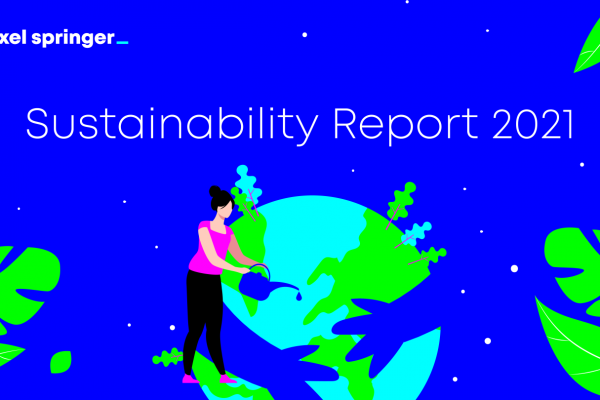Axel Springer releases its Sustainability Report for 2021, showing impressive results
Axel Springer has published its Sustainability Report for the fiscal year 2021. More than 1,300 employees including 40 senior managers are now involved in sustainability governance at the company, with more than 42,000 hours of sustainability training having been delivered throughout the company during the year.
The publisher has identified eight key sustainability topics, which cover issues surrounding diversity and editorial integrity, in addition to climate change:
1. Diversity & Inclusion on the Job
2. (Journalistic) Independence
3. Data Protection & Cybersecurity
4. Diversity in Media Products
5. Climate Change & Energy
6. Responsible Procurement & Human Rights
7. Initial & Advanced Training
8. Integrity & Compliance

When it comes to the environment, the company has set itself a target of reducing its overall carbon footprint (including Scope 3 contributions, such as travel and data storage) 90% by 2045, and already has 12 completely climate-neutral units:
- AdUp Technology
- APX
- Axel Springer Ideas Engineering
- Axel Springer National Media & Tech (NMT)
- AUTO BILD
- Bonial
- hy
- Idealo
- Immowelt
- Ringier Axel Springer Poland
- Upday
- WELT AM SONNTAG (WAMS)
Overall in 2021, the company recorded a strong period, with green electricity contributing 72.8% of total consumption in 2021, up from 67.3% the previous year. Total direct and indirect emissions (scopes 1 and 2) were reduced by roughly 18% to 19,300 metric tons (PY: 23,500t).

“2021 was a game changer for the sustainability ambitions of Axel Springer,” said the company’s CEO, Dr Mathias Döpfner. “We laid the foundations for our ongoing climate activities and jointly defined milestones for the future. To live up to our ambitions, we still have plenty of work to do. But I am confident that we can do this together and become a model for the media and technology industry and beyond.”
The year also represented the first reporting period that the company has had accurate primary data for its suppliers’ emissions. Analysis showed that on average, a newspaper creates 0.85 tonnes of CO2e per tonne of paper and a magazine around 1.18 tonnes. The company says that it will pass these findings on to the rest of the industry, to help create a calculation standard.
You can access the full report here.










